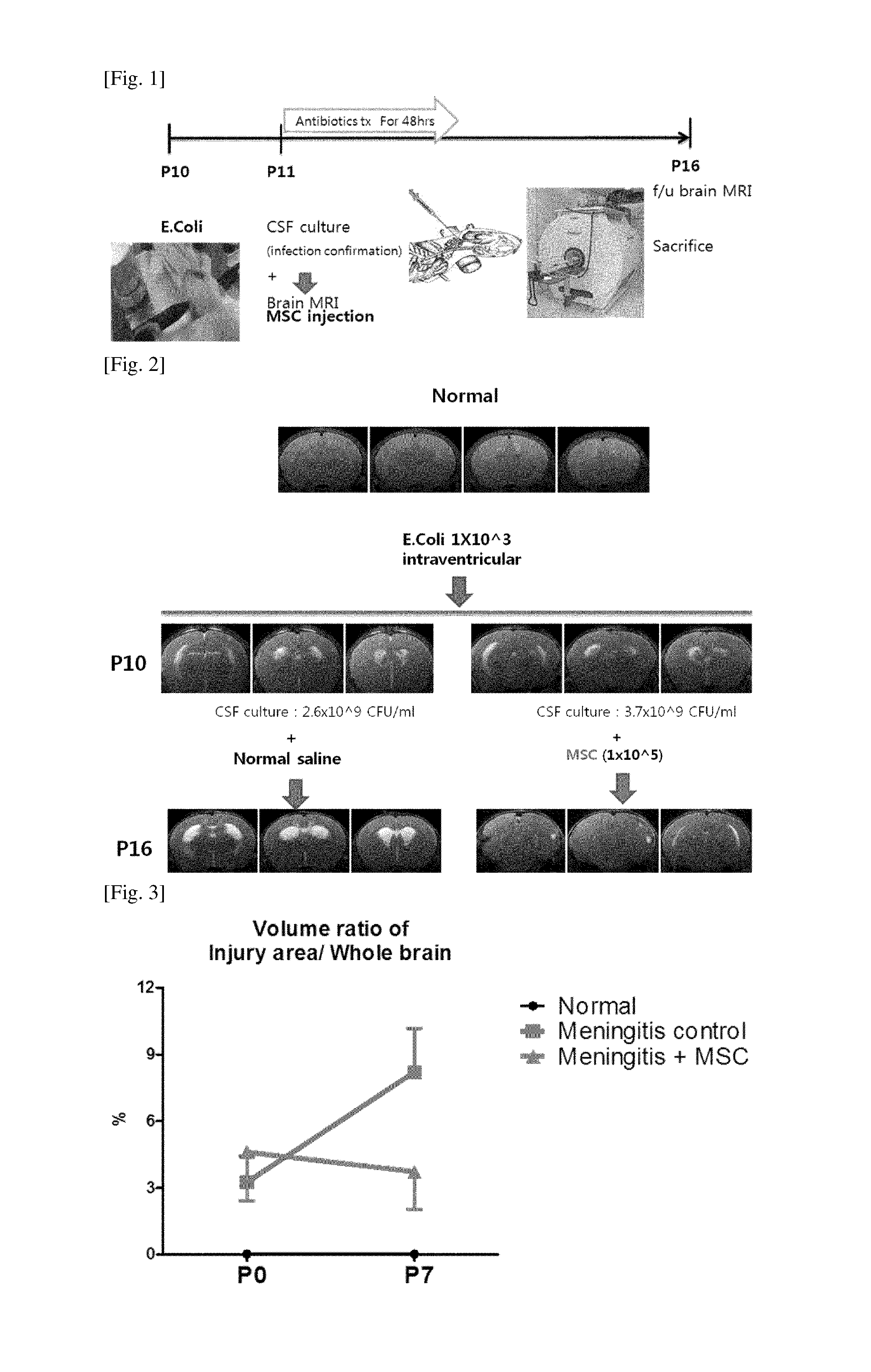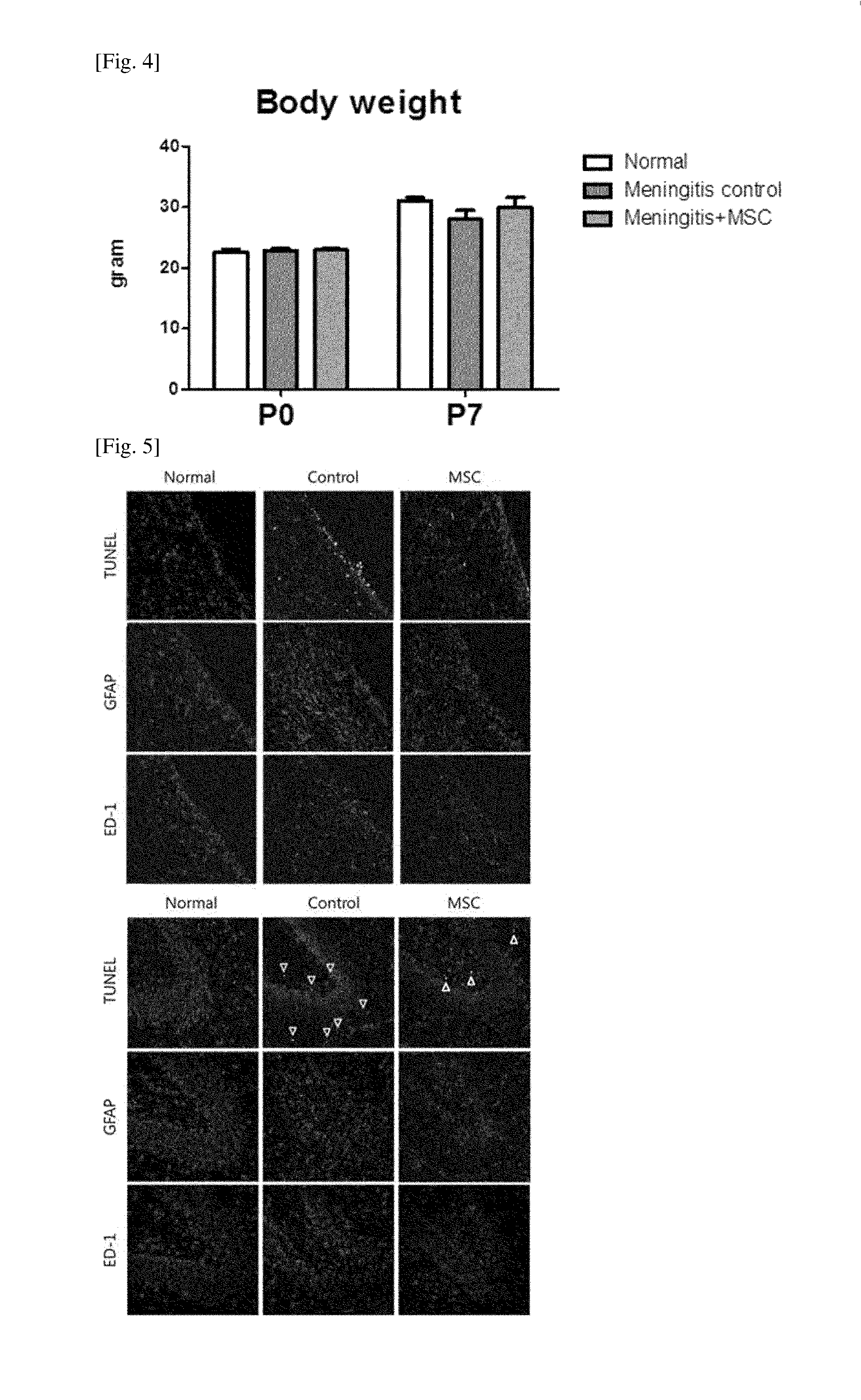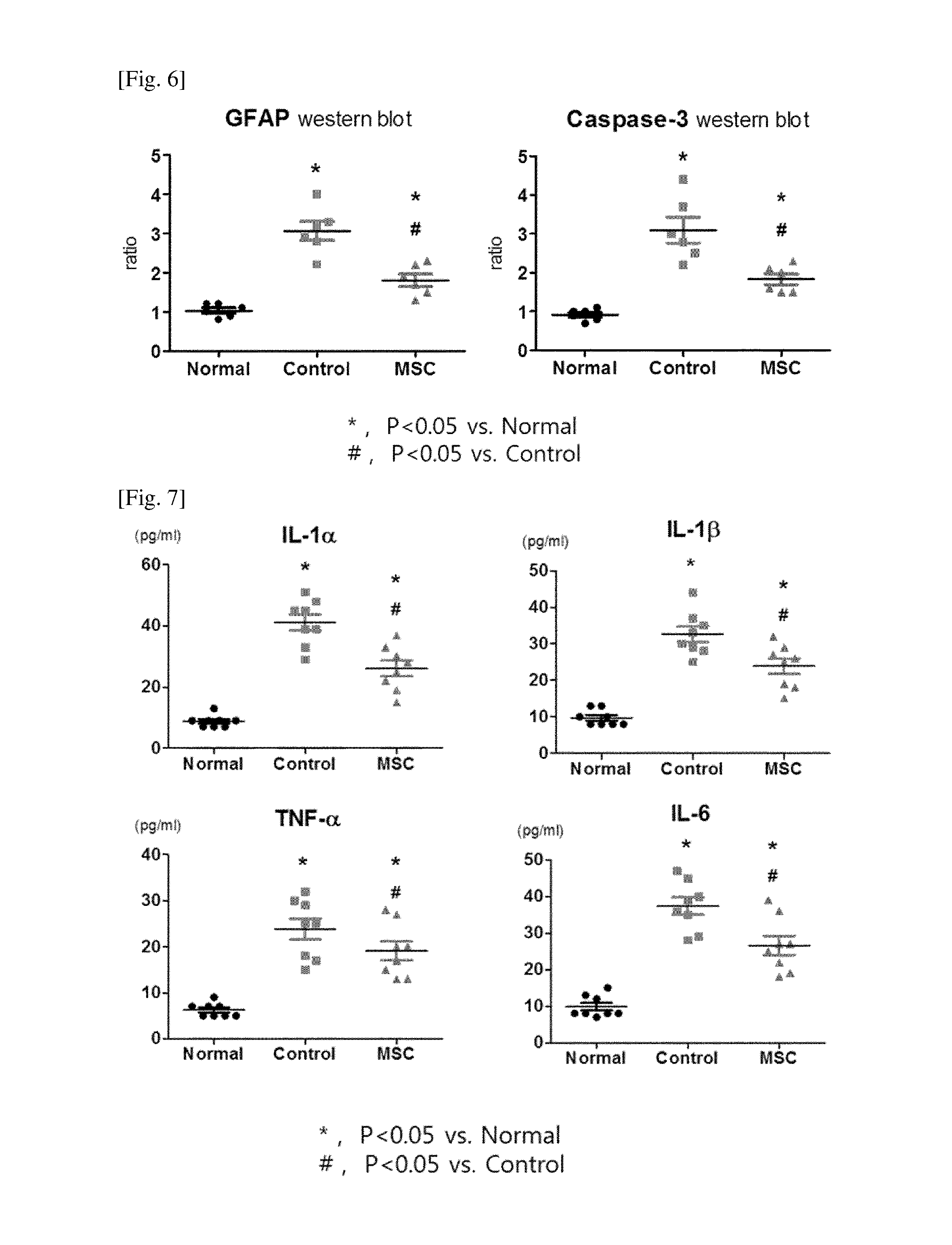Composition for treating inflammatory brain diseases which includes stem cell as active ingredient
a technology of stem cells and brain diseases, applied in the field of compositions for treating inflammatory brain diseases, can solve the problems of no systematic study on the treatment of inflammatory brain diseases using stem cells, and achieve the effects of reducing brain injury, excellent therapeutic effects on inflammatory brain diseases, and less side effects
- Summary
- Abstract
- Description
- Claims
- Application Information
AI Technical Summary
Benefits of technology
Problems solved by technology
Method used
Image
Examples
example 1
on and Characterization of Mesenchymal Stem Cells
[0037]The following experiment was performed to isolate mesenchymal stem cells from human umbilical cord blood. First, collected umbilical cord blood was centrifuged on a Ficoll-Hypaque gradient to isolate mononuclear cells including hematopoietic stem cells and mesenchymal stem cells, which were then washed several times to remove impurities. After washing, the mononuclear cells were seeded in a culture vessel and cultured, and among the cells that proliferated as a monolayer, mesenchymal stem cells which were homogeneous with an elongated spindle shape and proliferated in the form of a colony, when observed by phase contrast microscopy, were isolated and proliferated by subculture. Umbilical cord blood-derived mesenchymal stem cells subcultured for 5 passages were characterized.
[0038]As a result, it was found that the stem cells of the present invention expressed CD105 and CD73 markers, but did not express CD34, CD45 and CD14 marker...
example 2
tation of Mesenchymal Stem Cells into Ventricles of Meningoencephalitis Animal Models and Determination of Effects on Treatment of Meningoencephalitis
2-1. Design of Meningoencephalitis Animal Models
[0039]To create meningoencephalitis animal models, after 10-day-old white rats were anesthetized by inhalation of nitrogen monoxide, Escherichia coli (E. coli) of 1×103 colony forming unit (CFU) (10 ul) was slowly administered into the right ventricle using a 31 gauge syringe for 60 seconds on a stereotaxic frame, and then an antibiotic Ampicillin (200 mg / kg) was administered every 12 hours for 2 days. To identify the effects of the stem cells of the present invention on the treatment of meningoencephalitis, 1×105 mesenchymal stem cells were diluted in 10 ul PBS and slowly administered into the right ventricle of white rats at the age of 11 days (P11), one day after the modeling (induction of meningoencephalitis), on a stereotaxic frame under inhalation anesthesia of nitrogen monoxide. I...
PUM
 Login to View More
Login to View More Abstract
Description
Claims
Application Information
 Login to View More
Login to View More - R&D
- Intellectual Property
- Life Sciences
- Materials
- Tech Scout
- Unparalleled Data Quality
- Higher Quality Content
- 60% Fewer Hallucinations
Browse by: Latest US Patents, China's latest patents, Technical Efficacy Thesaurus, Application Domain, Technology Topic, Popular Technical Reports.
© 2025 PatSnap. All rights reserved.Legal|Privacy policy|Modern Slavery Act Transparency Statement|Sitemap|About US| Contact US: help@patsnap.com



